Rising Demand for Centrifuge in Medical Aesthetics
In recent years, noninvasive medical aesthetics treatments increased with an annual rate of 11.1% from 2018 to 2023. Several celebrity influencers started taking PRP injections to stimulate collagen and elastin production to improve skin and hair growth. Medical Aesthetics has seen revolutionary growth in the demand for Centrifuges to conduct invasive procedures in aesthetic dentistry, orthopedics, cosmetology, and dermatology.
What is a Centrifuge Device?
A centrifuge is a laboratory device used in various research fields to separate particles from a solution. These particles were separated based on the size, shape, density, and viscosity of the fluids or gases. The separation process depends on the rotor speed of the centrifuge type.
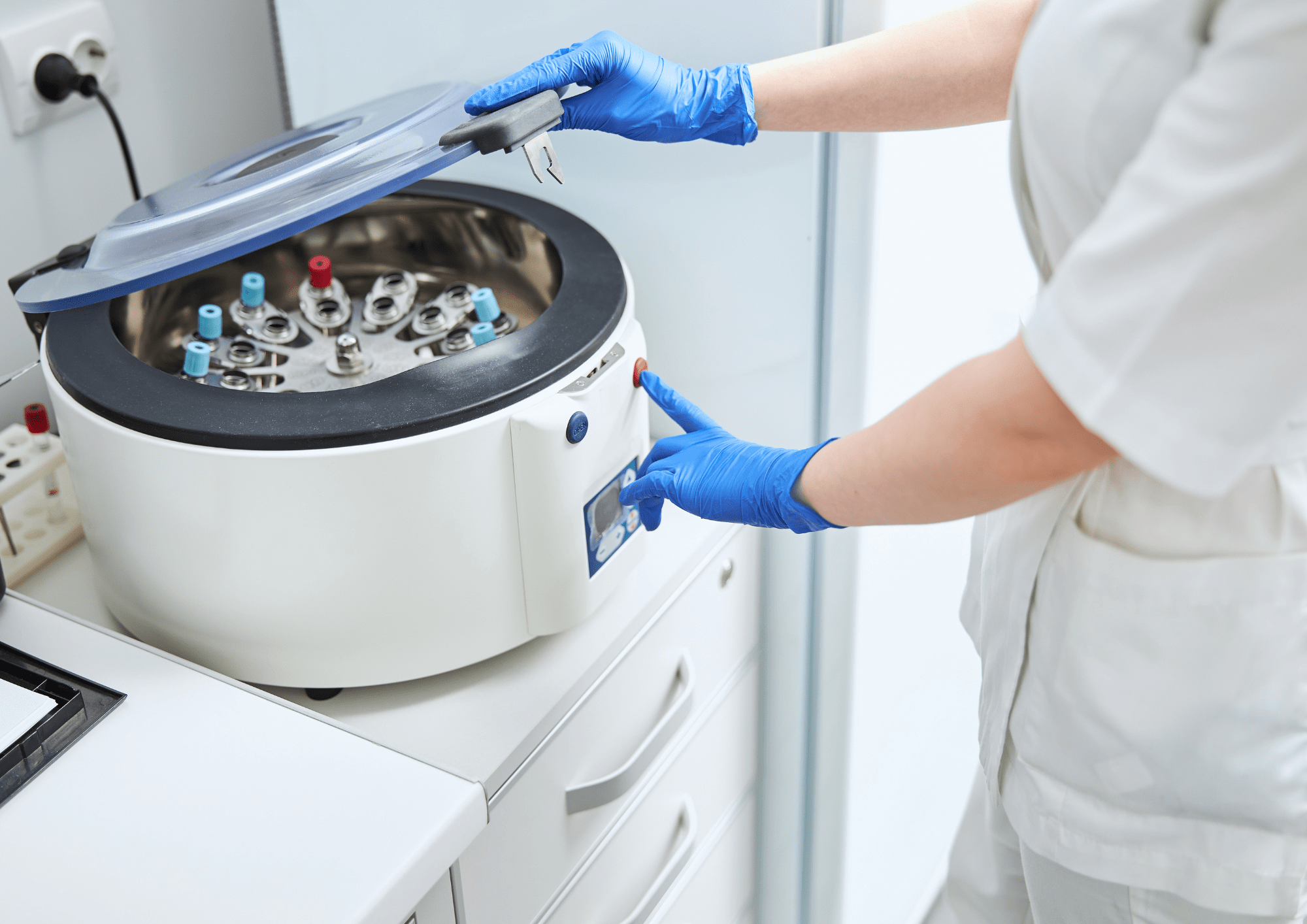
In clinical labs, centrifuges are used for the separation, purification, and isolation of heterogeneous mixtures of organelles, cells, nucleic acids, proteins, and viruses for further observation. Basically, if the sample mixtures have a higher density than the solvent, the particles will sink to the bottom of the tube; and in sample mixtures with a lower density than the solvent, the particles will float on the top. Therefore, in situations where particles need to be separated from sample mixtures where there is little to no density difference, the Centrifuge creates a centrifugal acceleration to separate the particles out of the sample mixtures.
How does Centrifuge work?
All different types of centrifuge work on the same sedimentation principles where suspended particles settle out of the fluids through gravitational force. However, one of the most common uses of centrifuge is to separate red blood cells and plasma or serum from whole blood components.
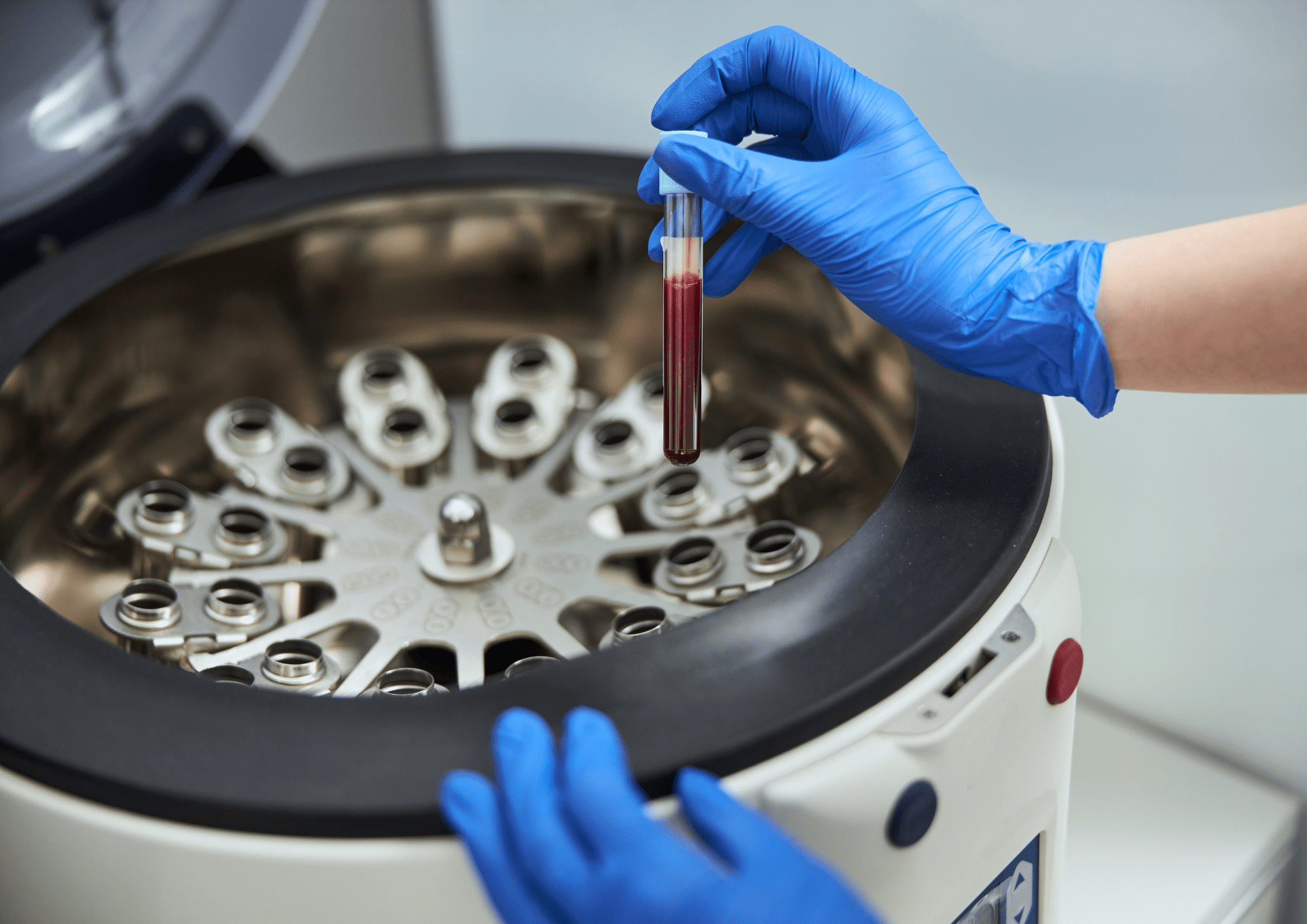
Plasma is obtained when a small amount of blood sample is drawn from the patient's arm. The retrieved blood sample is collected in a test tube to undergo a centrifugation process to spin the blood; the mode of duration, frequency, and rotation of the rotor is set. After the centrifugation process, the red and white blood cells visible rest at the bottom while the plasma float at the top of the tube. Thus, the centrifugation process simplifies the plasma sample with the high platelet count; also, three kinds of PRP kits clinical researchers can use to get platelet concentrate are gel separator, buffy coat, and double spin buffy coat. The enriched plasma stimulates the production of collagen, elastin, and new cells and tissues.
1. Gel Separator System
In this method, Serum Separator Tubes and Plasma Separator Tubes contain separator gel additives to ensure the platelet concentrate gets captured in the gel layer while separating the plasma from white blood cells and red blood cells. During centrifugation, the gel moves to create a physical barrier between a cellular sample and the plasma. However, the platelet count from the serum separator system will be lower and not suitable for some sample tests that are sensitive to chemical interference.
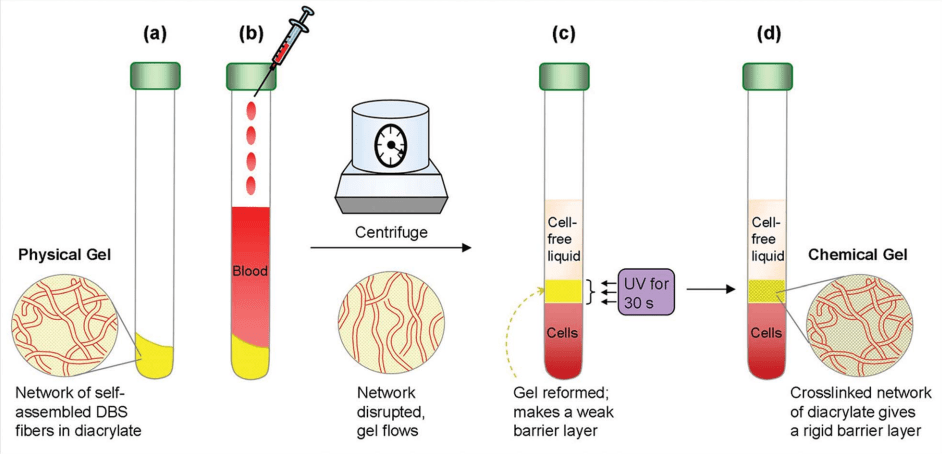
2. Buffy Coat System
A buffy coat layer contains leukocytes in a concentrated suspension, which allows the centrifugation easy for the samples with a high platelet count. The buffy coat is a fraction of whole blood, that mainly consists of four types of cells namely Lymphocytes, Monocytes, Granulocytes, and Platelets. Kits that use a buffy coat are used for downstream analyses or the isolation of specific cell populations. Upon successful centrifugation, the top layer will have plasma and leukocytes with less than 10% red blood cell count in the test tube.
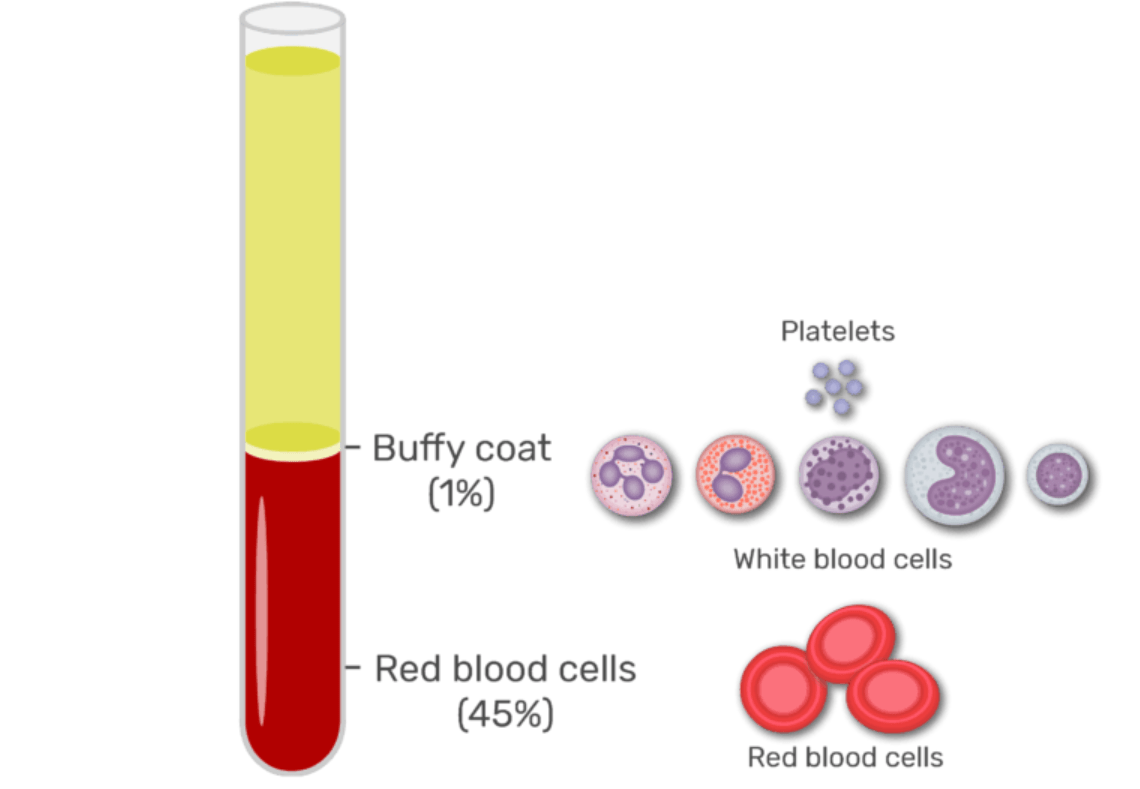
3. Double Spin Buffy Coat System
Double spin allows the solution from the initial buffy coat procedure for better filtration of red blood cells from the final sample. Doubling the centrifugation of the blood sample will increase both platelet recovery and platelet viability in the concentrated PRP sample; only pure concentrated platelets will stay in the plasma layer. Double Spin Buffy Coat procedure will completely remove the red blood cells and only a higher number of platelets will remain in the concentrated solution.
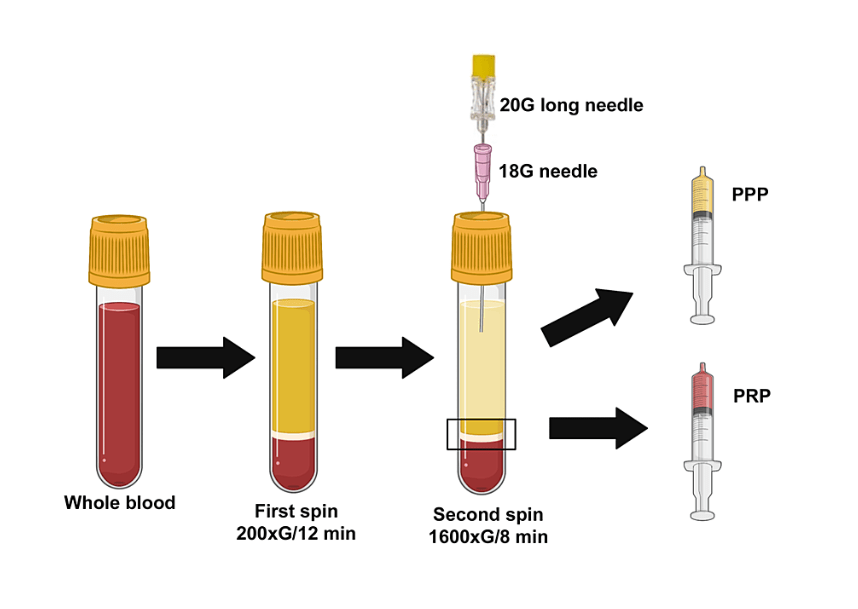
How is PRP used for Medical Aesthetics?
PRP is a form of cosmetic injectable treatment that uses the client’s own plasma. Platelets are known for clotting abilities, production of collagens, and acceleration of the body’s natural healing process; PRP is simply blood that contains more platelets than normal. The PRP injections are known to treat and improve skin texture, hyperpigmentation, reduce fine lines and scarring; also, stimulate collagen and cell production for plumper rejuvenated skin. To prepare PRP, a small amount of blood sample is taken from the arms and placed into Centrifuge that rapidly spins the sample at high speed thereby separating the concentrated platelets from the whole blood.
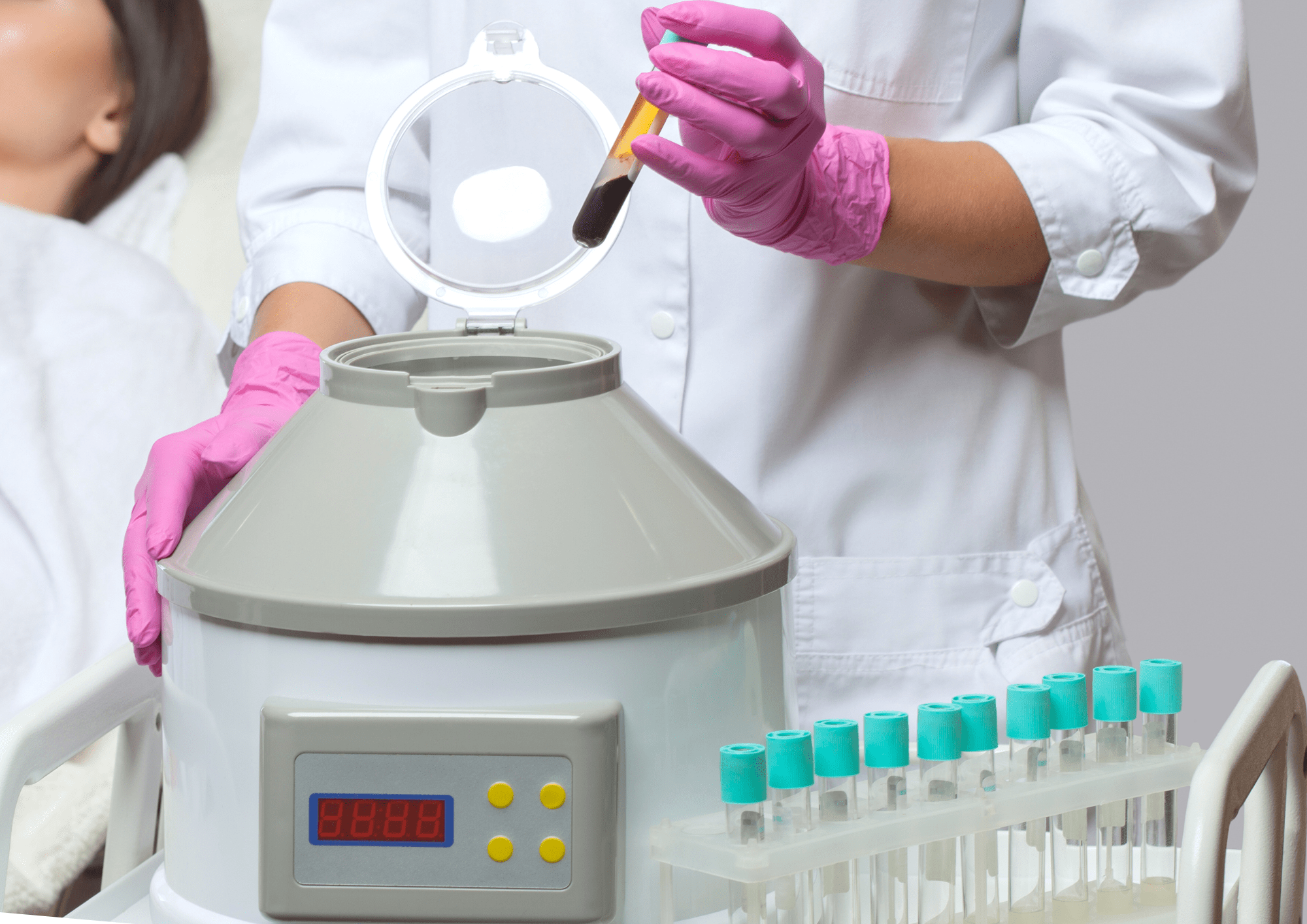
With the growth of the Medical Aesthetics market for Platelet- Rich Plasma (PRP)-based treatments; the rise in demand for PRP-based procedures has given rise to the demand for Centrifuge devices. The market growth of PRP injections is known to treat musculoskeletal pain, promote skin rejuvenation, and prevent hair loss. Since PRP treatments are considered safe and efficient, the market is expected to rise by 13% from the year 2023 to 2027. Hospitals and Medical Aesthetic Clinics are expected to hold the largest share of the centrifuge market by the year 2027; followed by biotechnology and pharmaceutical companies, academic and research institutes.
North America is expected to witness significant growth in demand for the Centrifuge market due to growth factors like early diagnosis and treatment, increasing demand for blood, availability of reliable and technologically advanced centrifuges for blood separation, and lastly, a large number of Medical Aesthetic Clinics growing. The factors driving the growth of the centrifuge market is due to increasing investment in R&D activity, and technological advancements.
Bottom Line
Research studies have shown boosting factors in Platelet-rich plasma (PRP) and high-molecular protein fibrin (PRF) are used to speed up the healing process in patients. This led to several developments in centrifugation technology to enhance the procedure for large-scale clinical applications. High-quality and technologically advanced Centrifuge devices are available at Labstac for your research needs.
We offer a different range of centrifuges that ensure the accuracy of the centrifugation process used by lab technicians and scientists, for their intended purposes. Contact us for the standardized Centrifuges requirements.
You May Also Like









